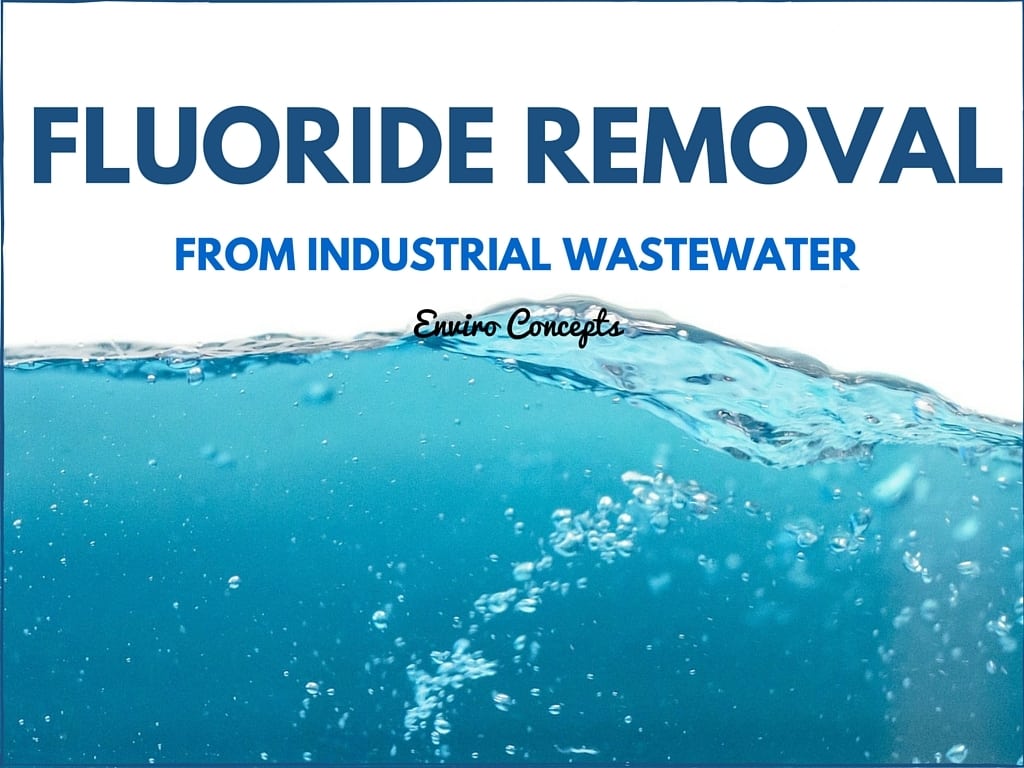With environmental protection and council regulations, much attention is given to the standards of controlling the concentration of substances in the discharged wastewater from factories. There are several industries that produce a high concentration of fluoride in waste water. Fluoride removal is a challenging issue for several of these plants and therefore it is important to understand the treatment options of fluoride-laden wastewater.
Why is Fluoride Removal Important?
In a typical estuarine environment, fluoride occurs naturally, up to 5 ppm. Discharging wastewater that has fluoride within the natural limit is safe, as otherwise it would be harmful to the environment. Managing fluoride waste water treatment is therefore increasingly important to discharge authorities and discharge limits of 20 ppm and lower are now common. The principal sources of wastewater with high concentration of fluoride come from manufacturing facilities for fertilisers, aluminum smelting plants, glass factories and surface treatments of copper, aluminum and stainless steel. Enviro Concepts has designed fluoride removal systems for safe removal and discharge to the environment.
Precipitation and Fluoride Removal
The traditional method of fluoride removal from wastewater involves a process of precipitation, coagulation and solids separation.
Precipitation is a process that involves the addition of chemicals and formation of fluoride precipitates. Large quantities of precipitation chemicals must be added daily in batches, in proportion to the volume of water and the concentration of dissolved ions. The process produces a certain amount of sludge every day.
In the coagulating sedimentation tank, the fluoride containing wastewater is treated with calcium hydroxide and pH is controlled. Through the process of coagulation, fluoride ions combine with calcium ions creating larger particles of calcium fluoride that exhibit low solubility and therefore can be moved through solids separation method.
The recovered sludge is disposed of as industrial waste (approximately 2 million litres of fluoride laden wastewater will create 40 KL of sludge).
Reverse Osmosis and Fluoride Removal
One of the challenges manufacturing facilities face is that the traditional precipitation method is dependent on high initial fluoride concentration and absence of competing dissolved ions. However, when the requirement is to reduce fluoride from a relatively low concentration to below 20 ppm, or sometimes below 10 ppm if required by EPA regulations, Reverse Osmosis membrane separation can help to reduce the fluoride load (even up to 2 ppm).
Using Reverse Osmosis process in wastewater treatment, we get 80% treated water with less than 2 ppm and this water can be reused for other industrial processes within the factory. The 20% remaining water has high concentrations of fluoride that can now go through the traditional process of precipitation, coagulation and separation to achieve desired results.
The biggest benefit of using RO is that the process can help to remove fluoride to more than 95%, regardless of initial concentration. The benefits also include synchronous removal of other dissolved solids, no chemical pre-requisites and it guarantees a steady water quality through the process.
If you have questions on Fluoride Removal from Wastewater, feel free to contact us or send us your query to get a FREE ESTIMATE within 24 hours.


